In the intricate world of football tactics, the role of a manager is paramount in shaping a team’s playing style and strategy. One such manager who has been making waves in the footballing landscape is Enzo Maresca, the tactician at the helm of Leicester City. Known for his astute tactical knowledge and innovative approach to the game, Maresca has been instrumental in Leicester City’s recent successes on the pitch. In this tactical analysis, we delve into Maresca’s methods, dissecting the nuances of his strategies and exploring how they have influenced Leicester City’s gameplay.
Build-up
Low Build-up
In the low build-up, Maresca sets his team up in a 4-2-5 formation, with the goalkeeper playing between the center-backs and a box midfield in the middle.
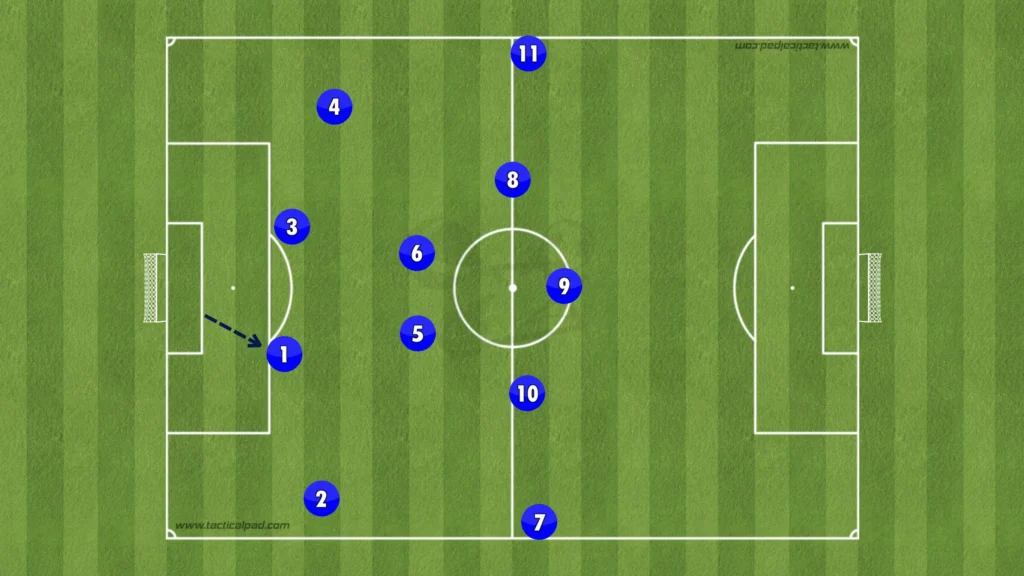
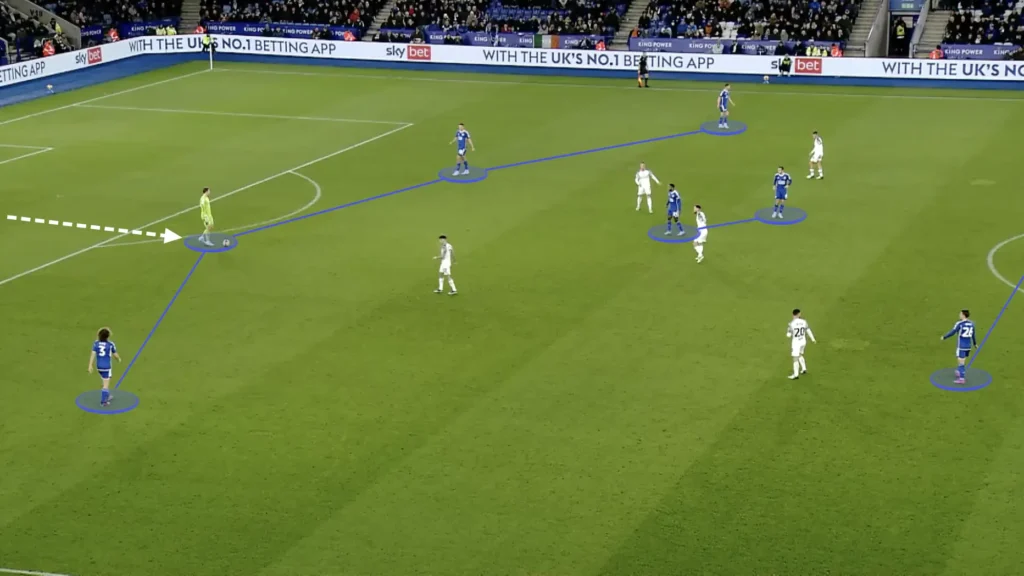
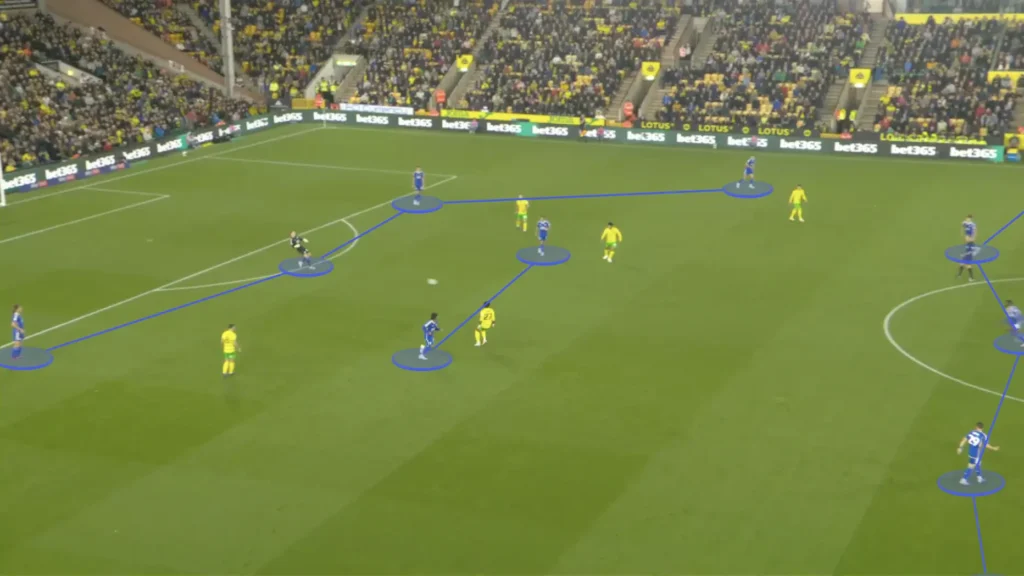
They often drop with the attacking midfielders and like using the goalkeeper, which creates numerical superiorities, allowing them to beat the press.
Inverted Fullback
The Leicester right-back Ricardo Pereira inverts during the build-up, creating more options in the center and less space between the players. Maresca likes this because he prioritizes playing through the middle. He needs one player high and wide to pull apart the backline while the rest create numerical advantages in the midfield areas. This builds good conditions in defensive transitions, allowing more players to press when they lose the ball. Another purpose for keeping many players in the middle is to shorten the distance between them. This shortens the length of the passes, which naturally shortens the time between passes. This means the opposition players will have less time to push up and press, giving the Leicester players more time and control.
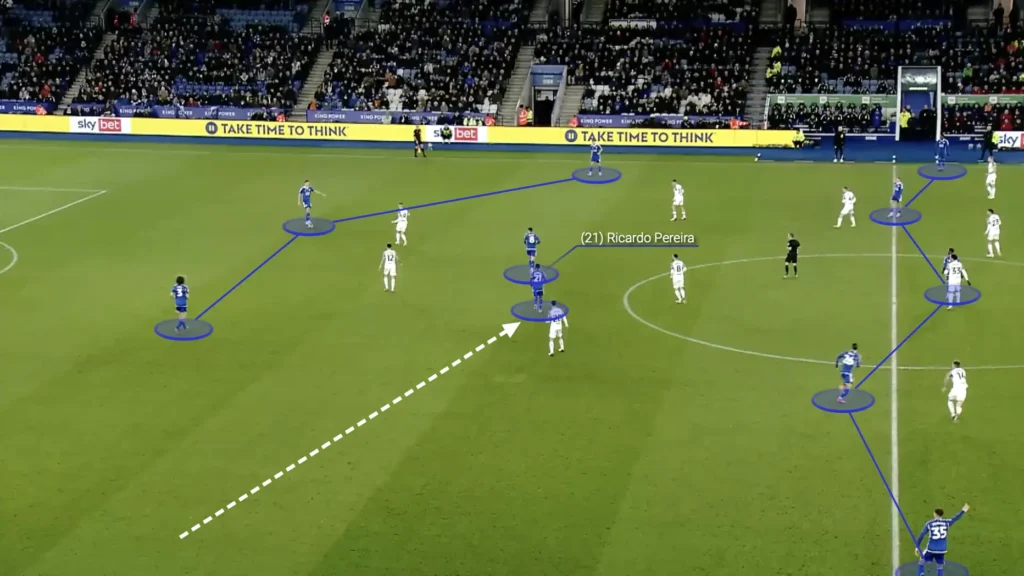
High Build-up
In the high build-up, Maresca’s Leicester sets up in a 1-3-2-5 formation, the same as in the low build-up without the goalkeeper between the center-backs:
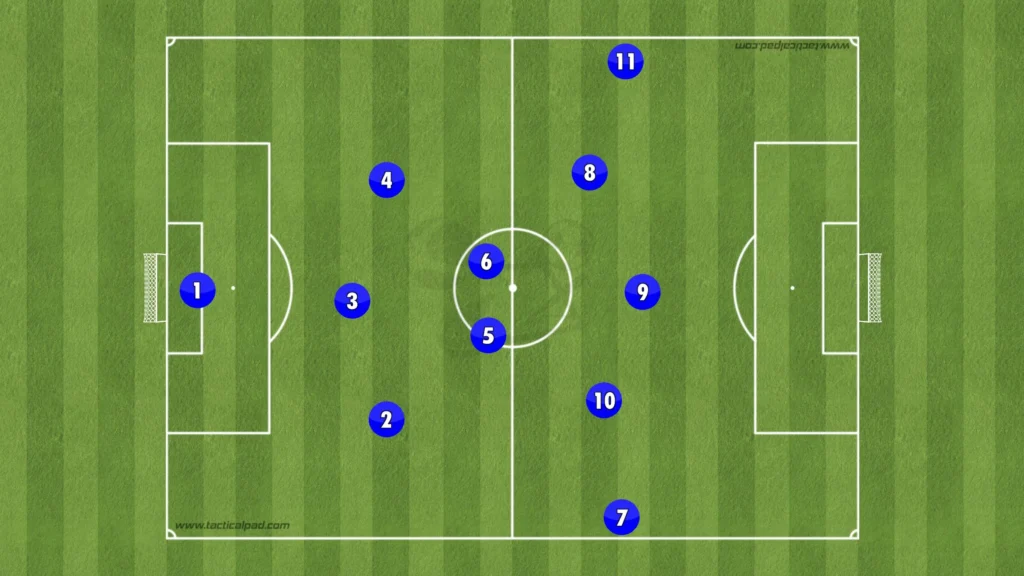
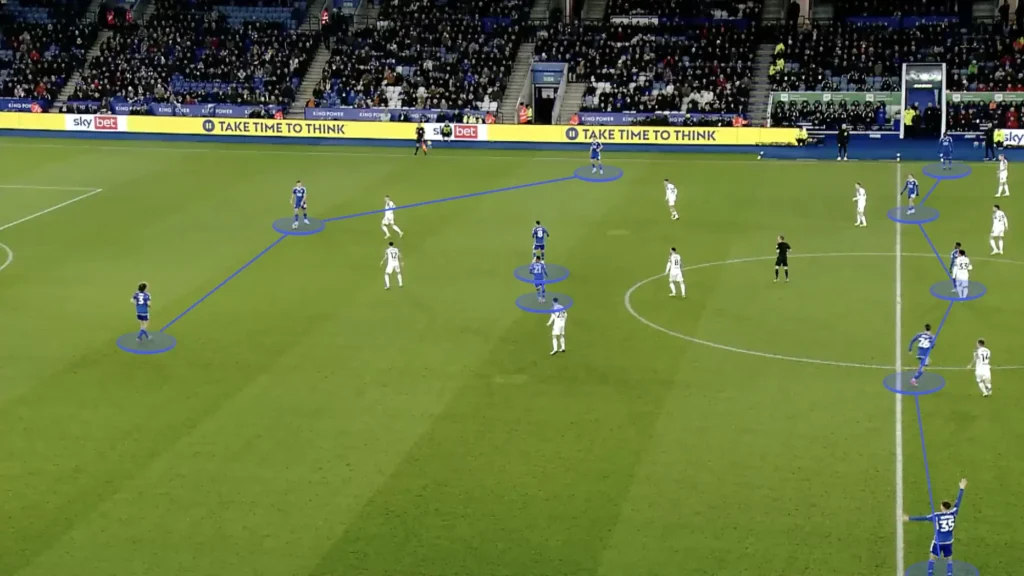
A massive aspect of Leicester’s high possession build-up is they keep a high backline. This helps in the counterpress because they get closer to the center. Having more players close to the center who can win the ball back makes it difficult for the opposition to recycle possession. Furthermore, the high backline shortens the distance between players, shortening the time and length of the passes and preventing the opposition from pushing up their defense.
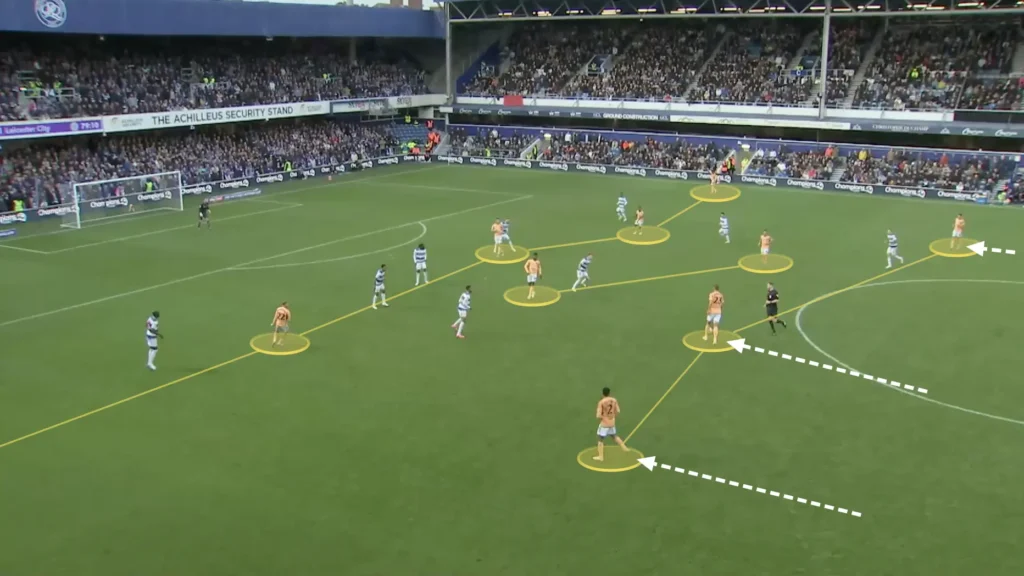
Leicester often rotates in their build-up, creating new formations to confuse opponents. They also adapt to their opponent’s formation to create numerical advantages in different areas, allowing them to beat the defense and score more goals. Their most frequent rotation is to push one of the holding midfielders into the attacking midfield, creating a 1-3-1-5-1 formation. Their principles and general guidelines stay the same when they do this.
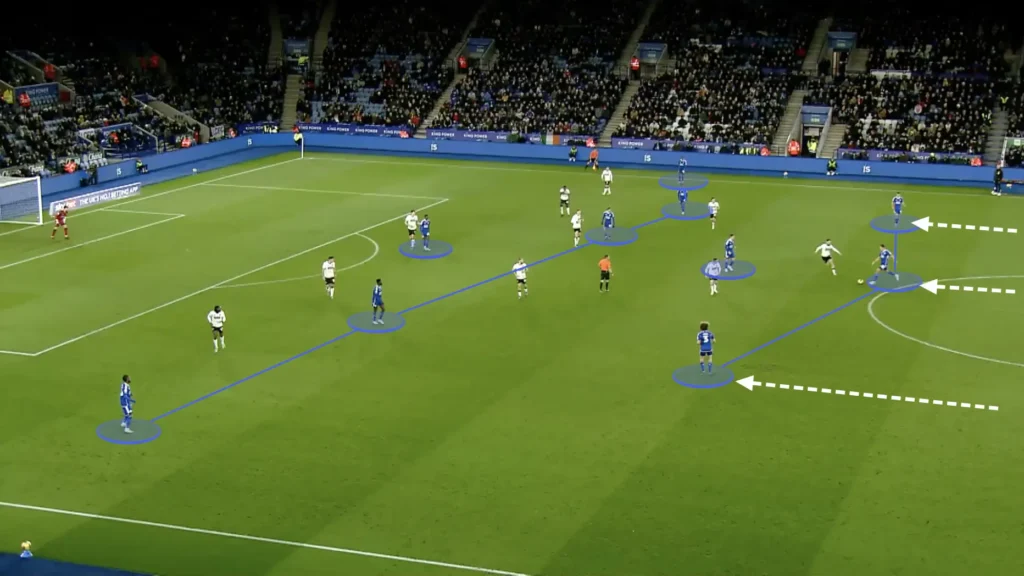
Attacking the Half-Space
Leicester is an excellent team in the final third. They always create many chances, mainly by attacking the space between the opposition center-back and fullback.
They do this both from the wide areas with underlaps from midfielders.
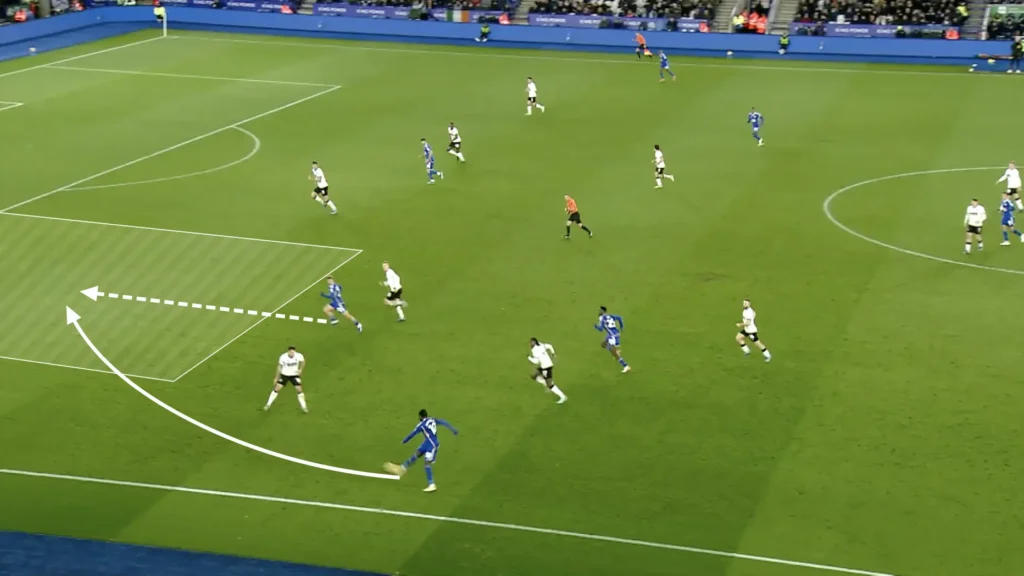
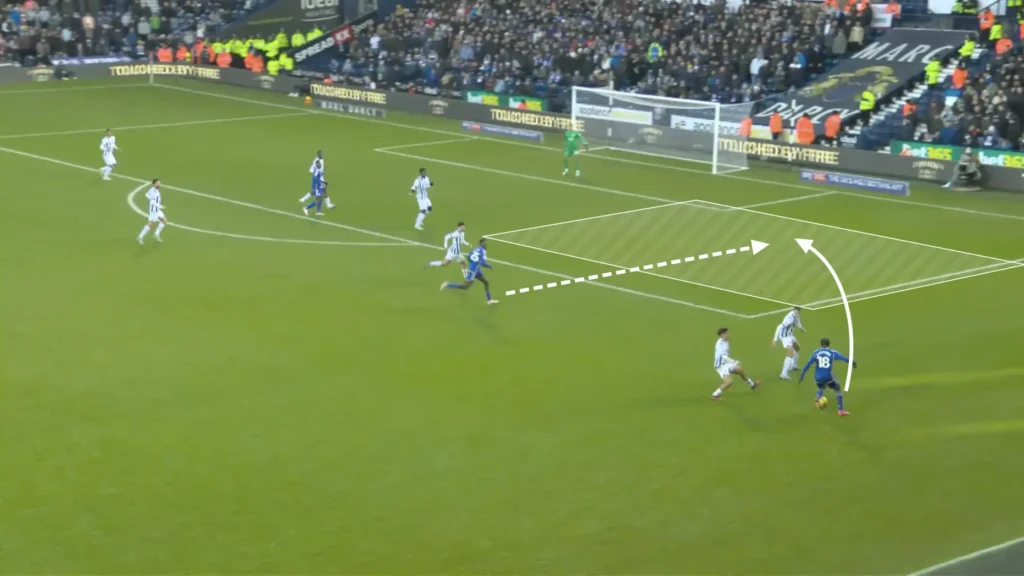
And from midfield runs and passes from the center.
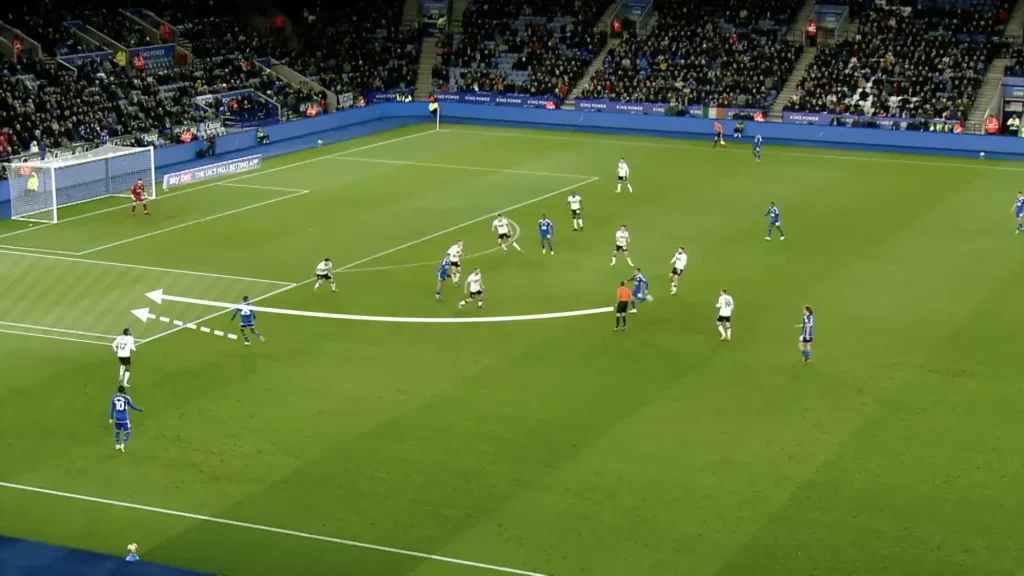
The underlapping run also drags an opposition defensive midfielder away, which allows the winger to take the ball inside. When this happens, another opposition player needs to press the winger. This opens up new spaces for Leicester to exploit. Here, the opposition’s holding midfielder pushes up on the winger, which opens a central space for the Leicester midfielders.
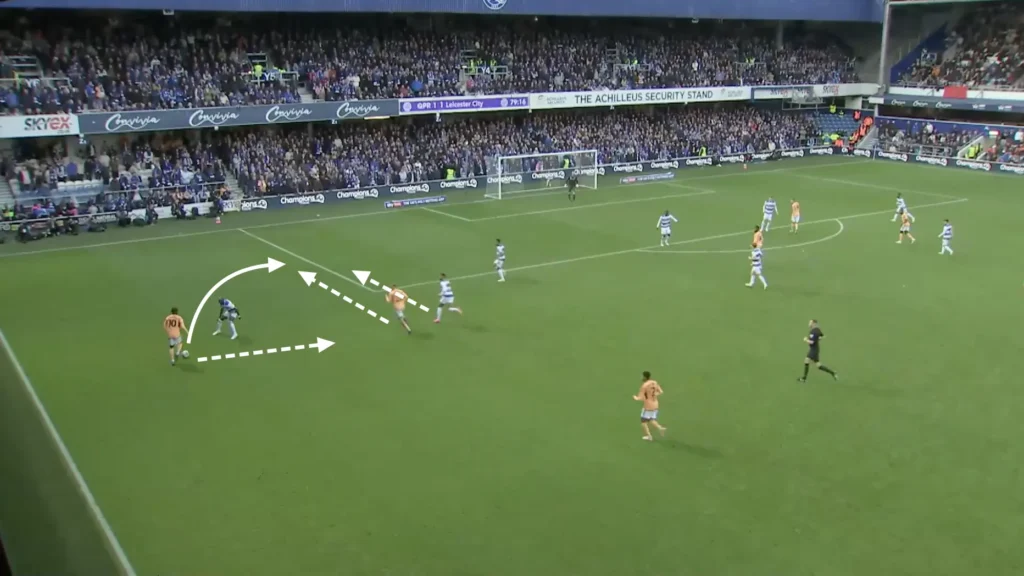
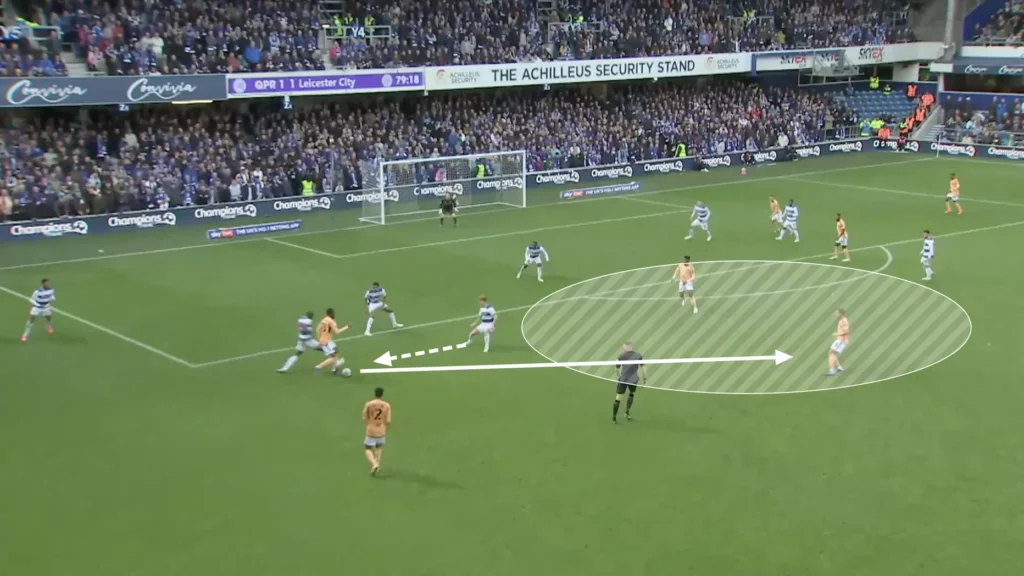
Dropping Striker
Enzo Maresca likes to create central overloads when attacking the opposition. Many opponents, therefore, defend with four midfield players to neutralize Leicester’s box midfield. Maresca’s answer to this is often to drop with the striker. When the striker drops Leicester, again become numerically superior in the midfield, allowing them to beat the opponent’s defense. If the center-back pushes up on the striker, Leicester will exploit the space in behind.
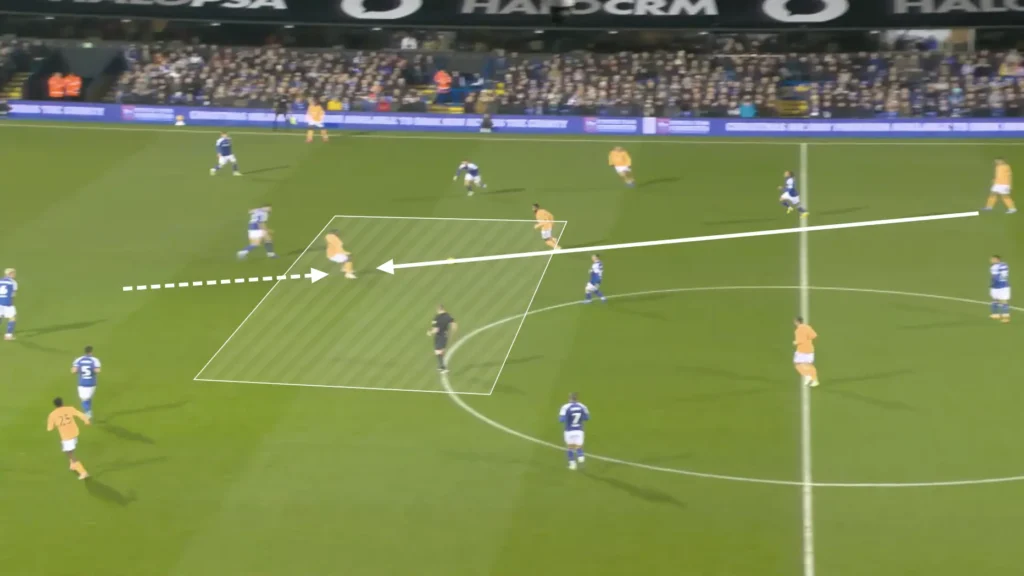
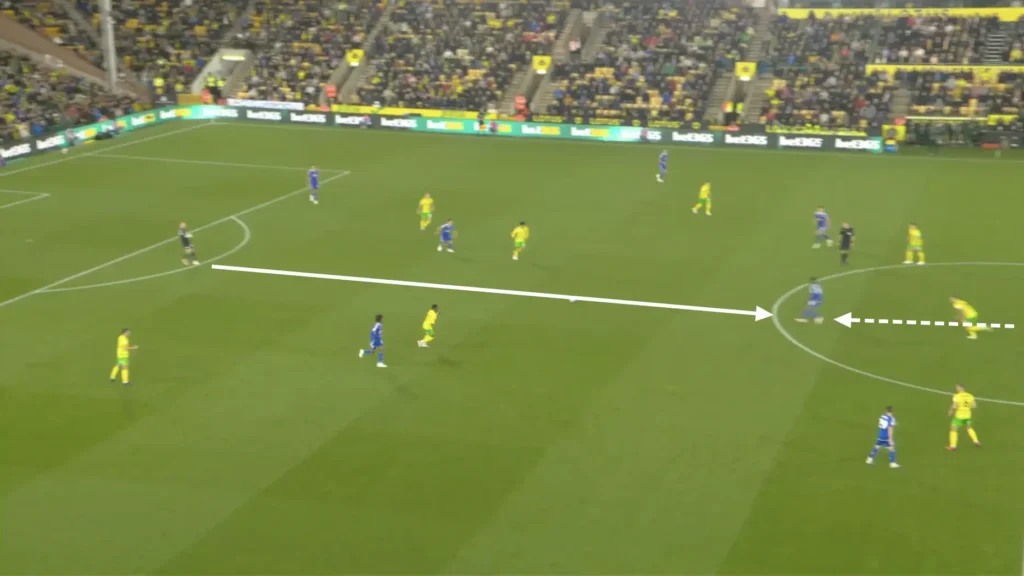
Many Players in the Box
The attacking midfielders also look to make runs into the box when the ball is in the final third, often getting four or five players into these areas to create overloads. The numerical advantages in the box force the defending team to make decisions and leave some players open. The open player can receive a cross or a pass and get a great goalscoring opportunity.
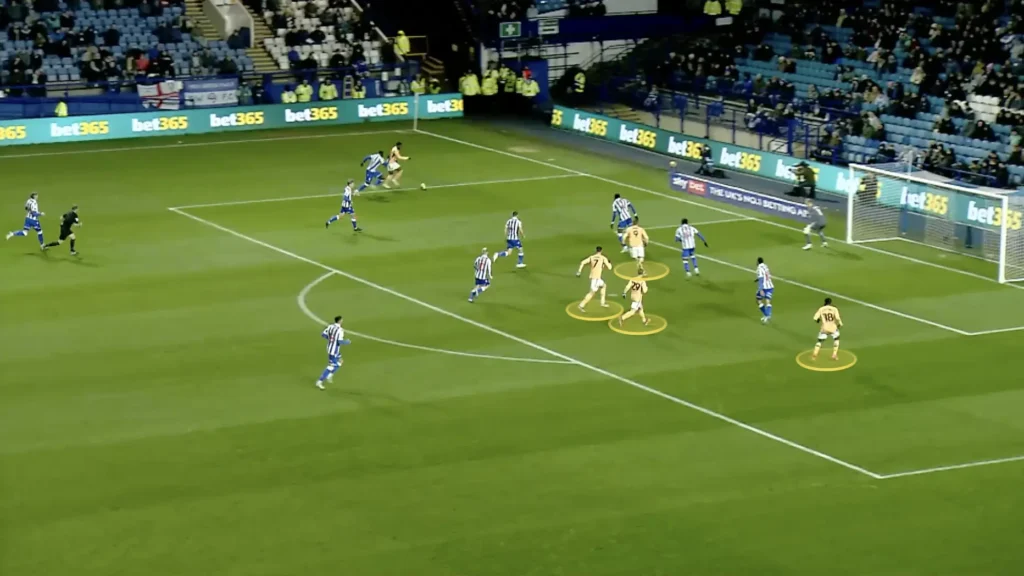
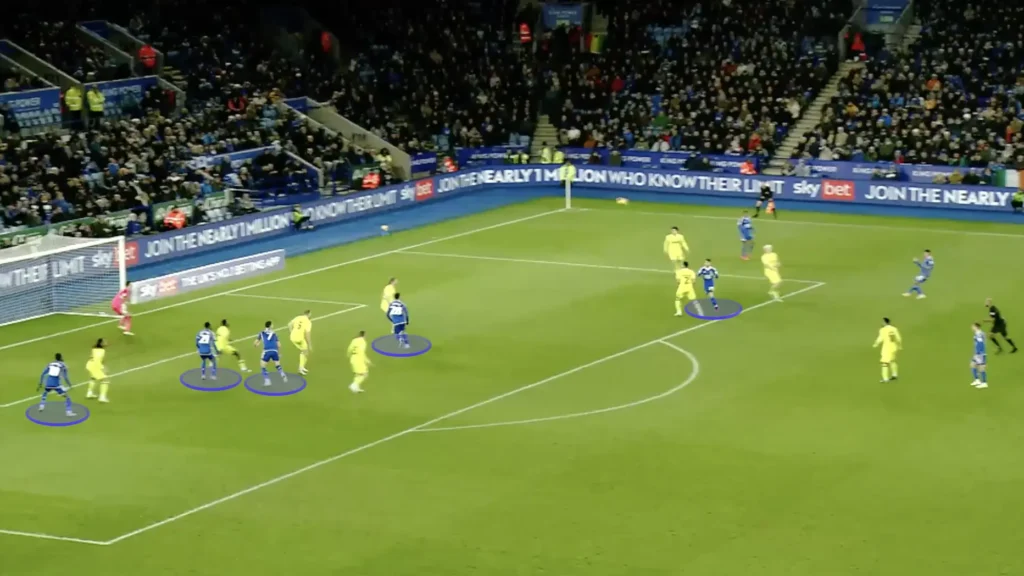
Principles and Tools
Playing Where the Space is
Enzo Maresca has repeatedly shown that he wants his team to play attacking and offensive football, regardless of the opposition. They like keeping possession and are often successful in doing so. Despite this, one of Maresca’s most important principles is to play where the space is. Against teams that do not press high, Leicester will often slowly build up, trying to bait the pressure and play through the opposition. However, against high-pressing teams, they look to quickly play in behind, utilizing the space that the opponent leaves open.
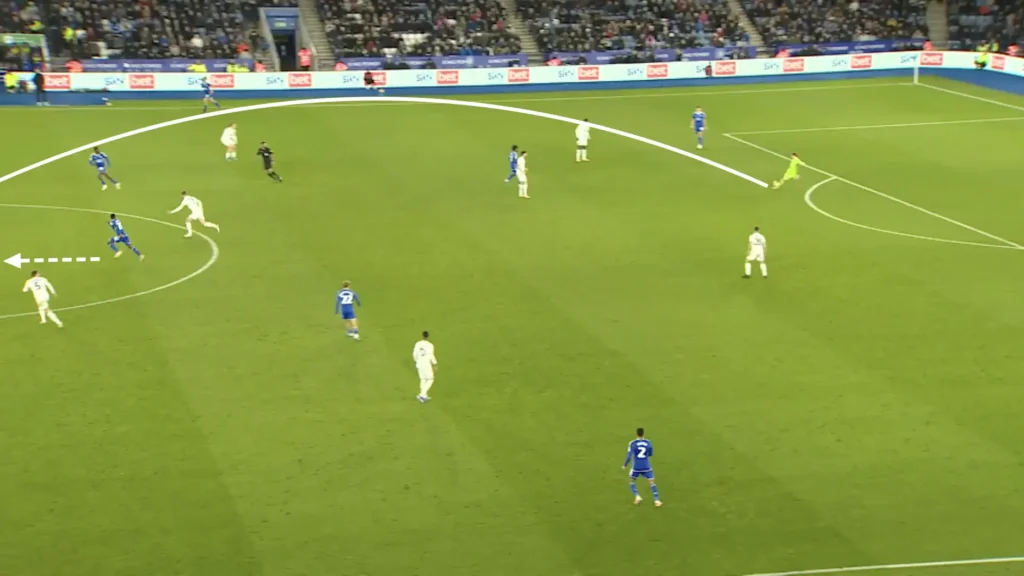
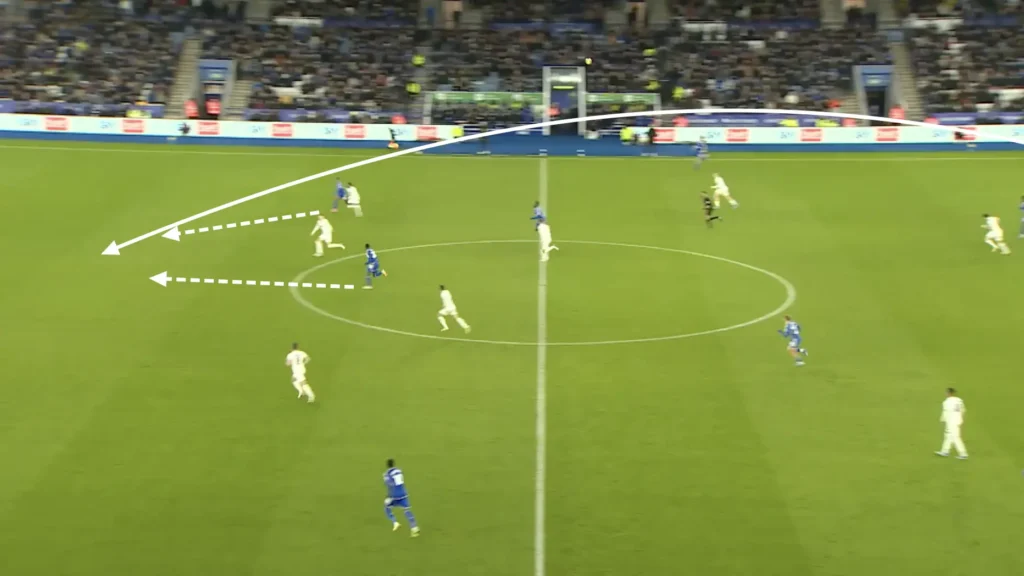
Third-man
Enzo Maresca, as established, likes it when his team plays through the opposition when possible. One vital tool that they often use is the third-man principle. This means using a third player to reach a free player whose passing lane is blocked.
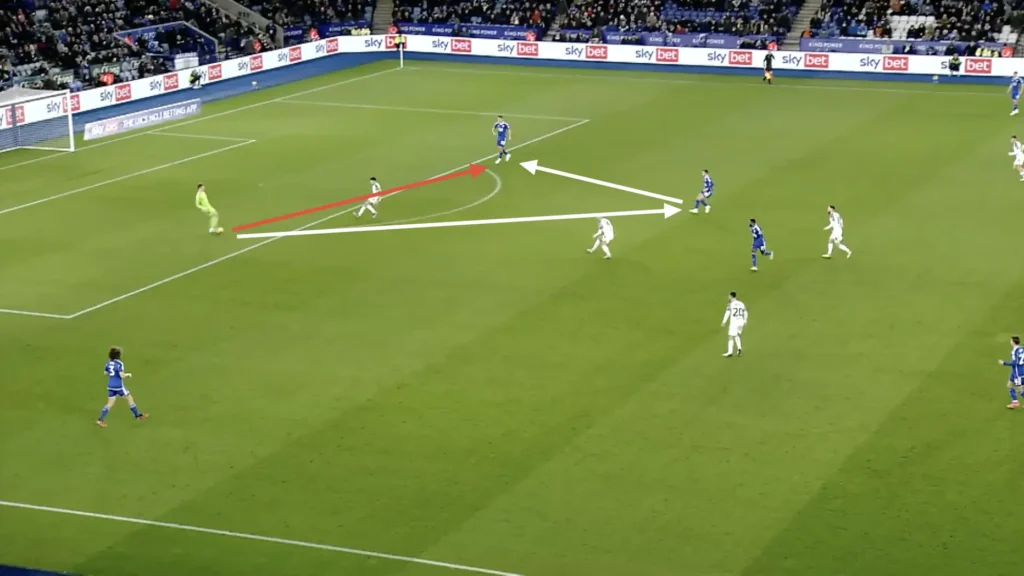
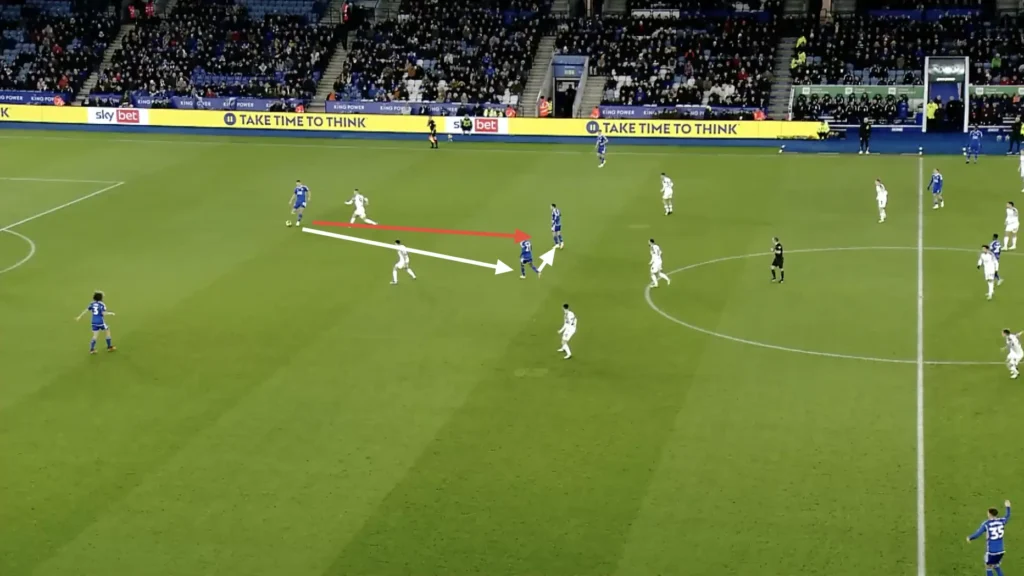
Numerical Advantages
Another essential principle of Maresca’s system is creating numerical advantages. Leicester constantly look to find 3v2 and 2v1 situations, and it is through these that they create many of their goalscoring opportunities. Runs from the attacking midfielders is one tool Maresca likes using in the final third. This is because of their 5v4 numerical advantage against back-fours. Runs in between the defenders force the fullbacks to follow the run, which opens the space outside for the winger. The winger can use the space to create new 2v1 situations or attack the goal directly.
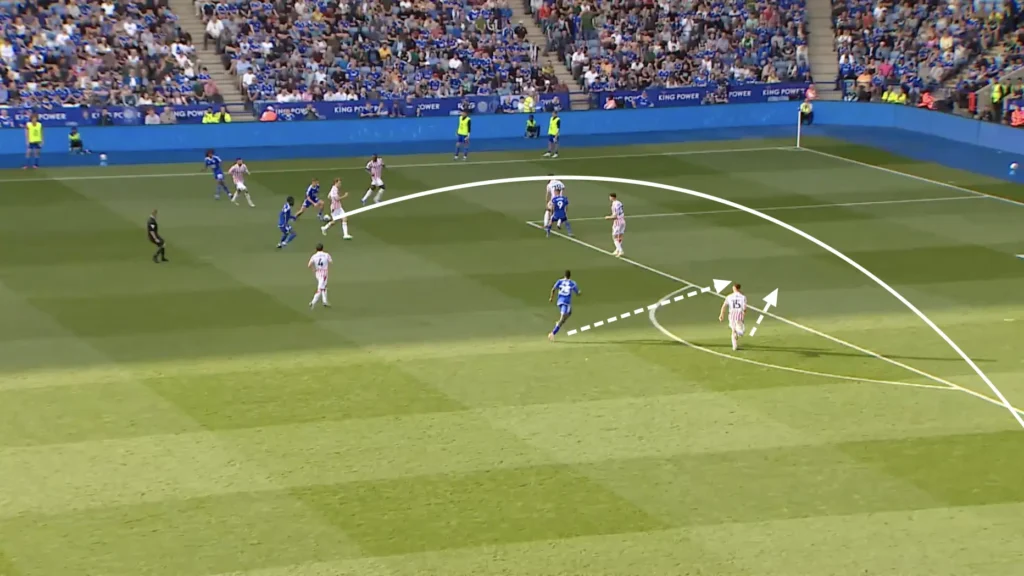
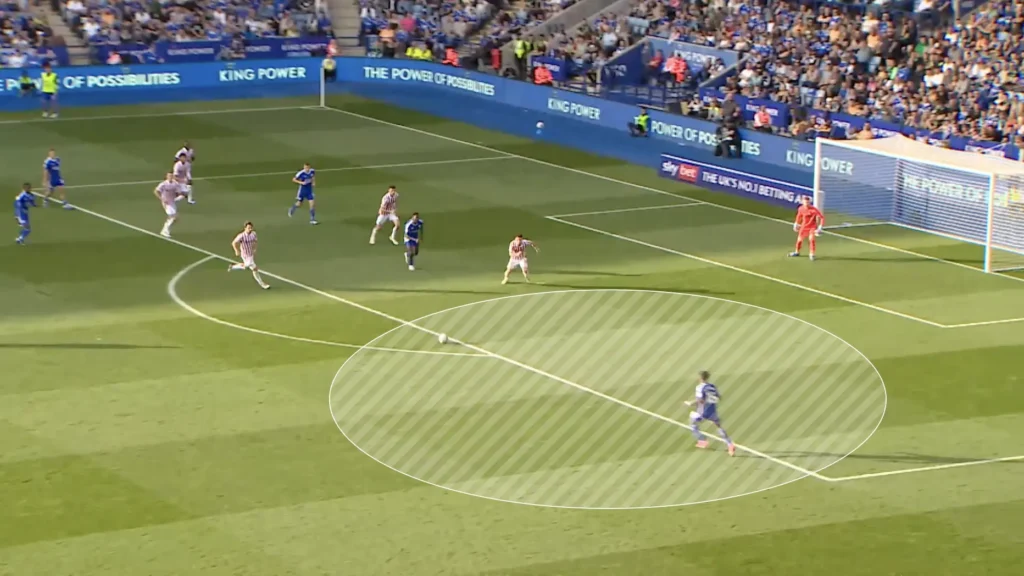
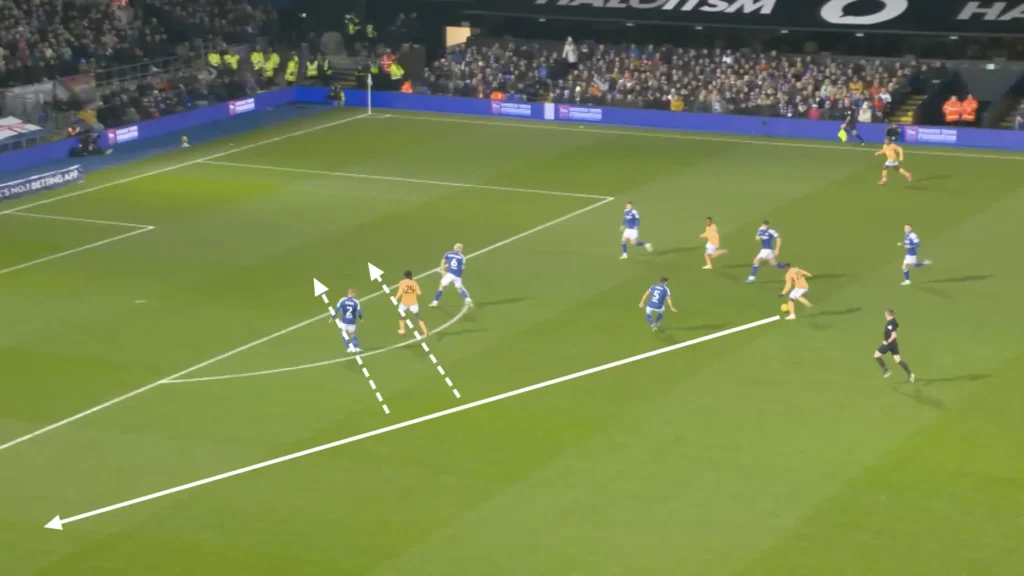
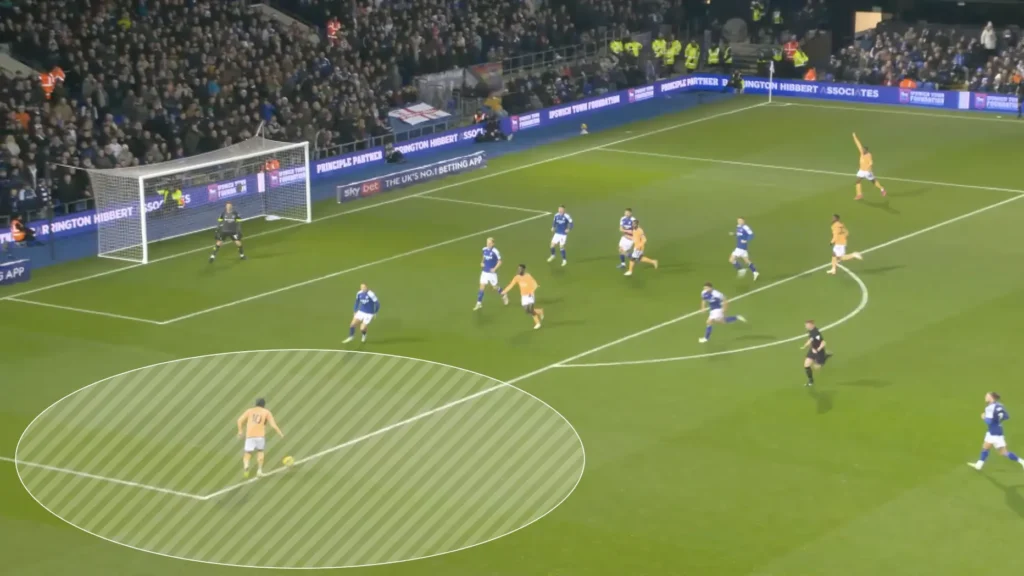
They also utilize the numerical advantage against the backline with runs behind the center-backs when the center-backs push up on the dropping striker.
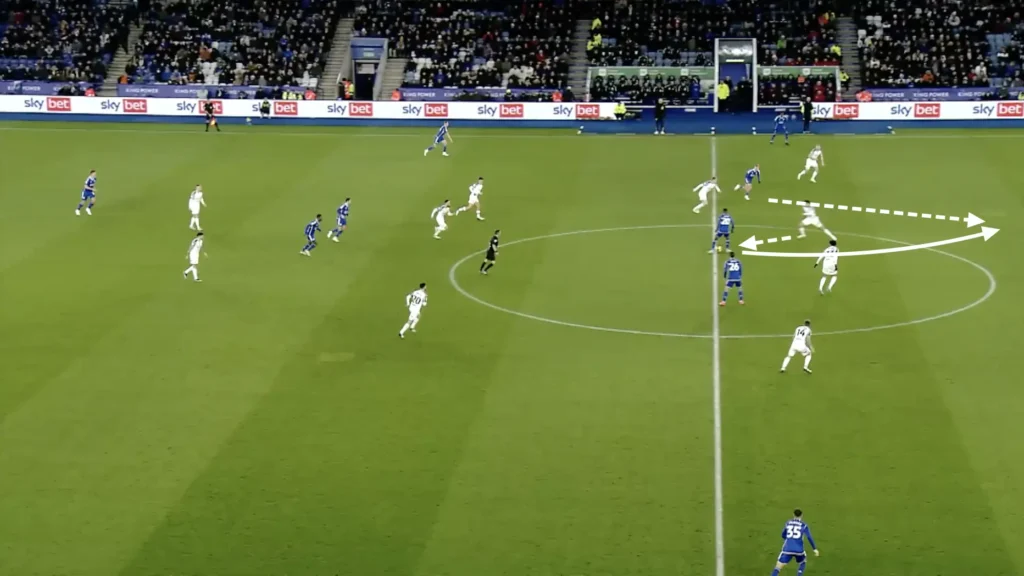
Defending
High Press
Maresca’s Leicester always looks to be aggressive without the ball. This shows in their high pressure. Maresca usually wants his team to go man-to-man and intensely press the opposition. Leicester often win the ball high up the pitch and get many goals thanks to their high press.
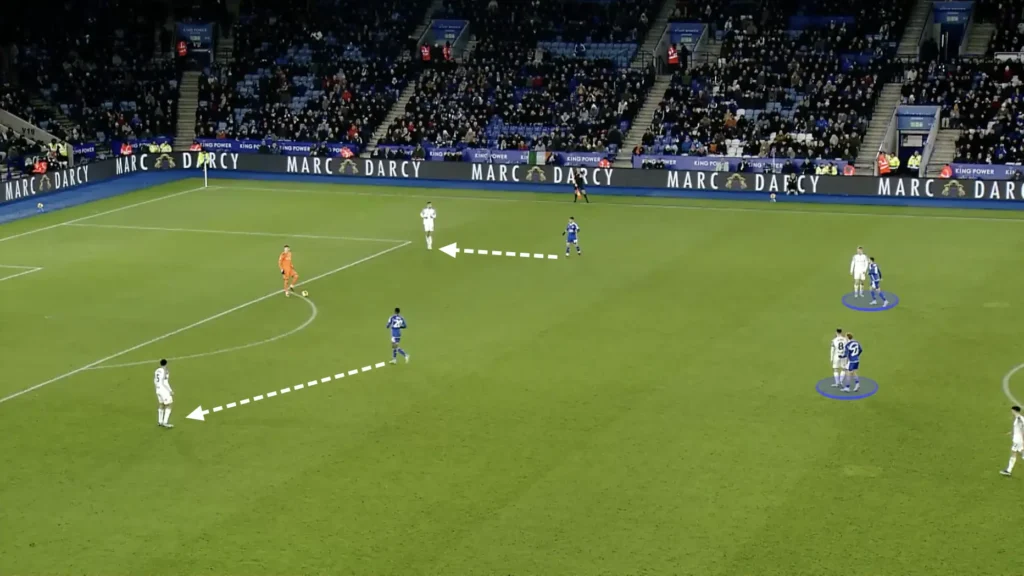
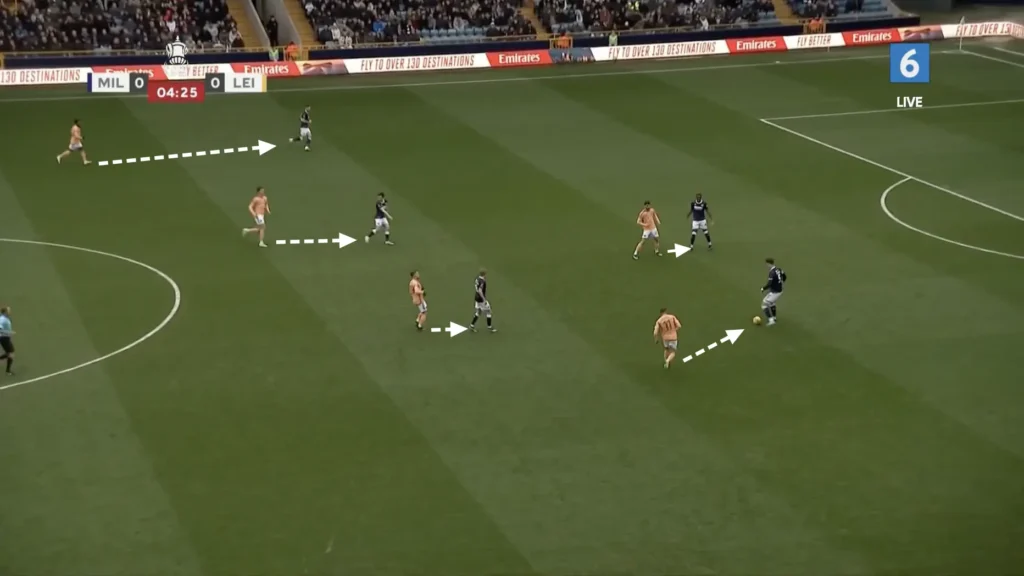
Low Press
Lower on the pitch, Maresca still wants his team to go man-to-man. Here, it becomes crucial that the players on the opposite side from where the ball is do not continue to mark the opponent they initially were responsible for. The pass from one side to the other is too difficult for the ball-holder to make, meaning they do not need to mark their player as closely. They can instead come in and help create numerical superiorities in the center, decreasing the risk of dangerous 1v1 situations.
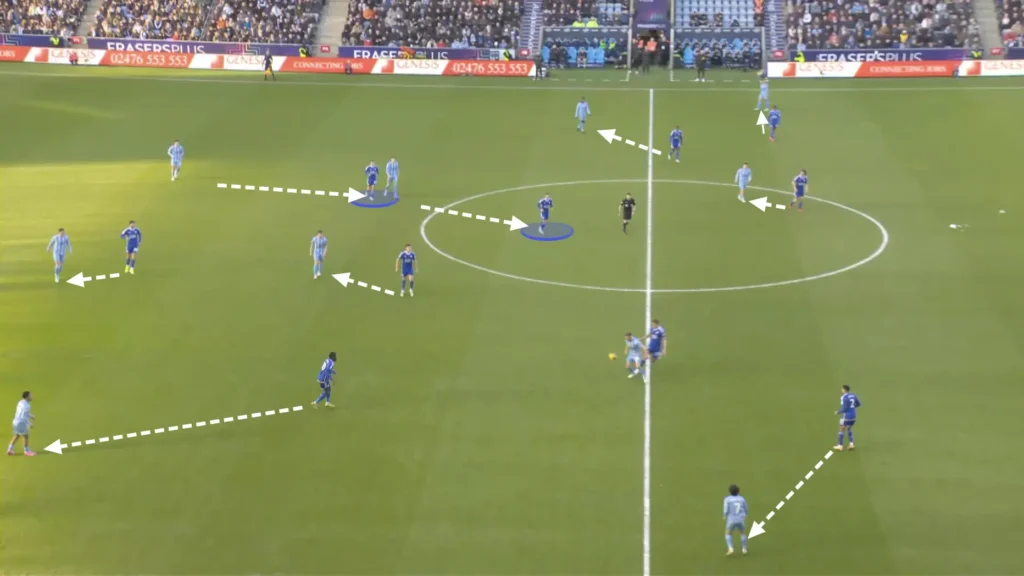
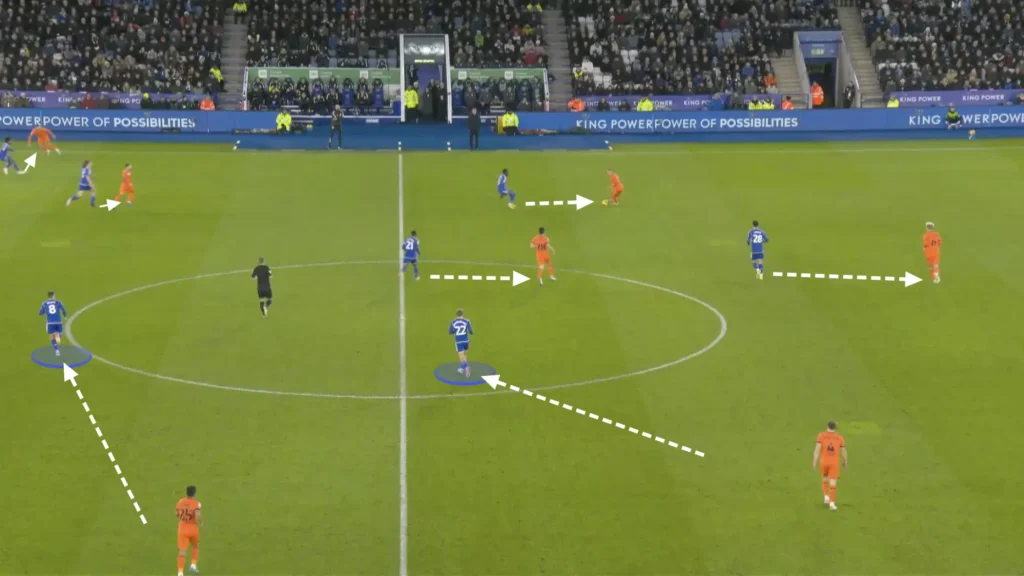
Defensive Transitions
Positioning many players centrally, creating a numerical advantage in the midfield, creates good conditions in defensive transitions. Many players close to the ball after losing possession means that many players can work towards regaining possession. Maresca’s team, therefore, often regains possession directly after losing it.
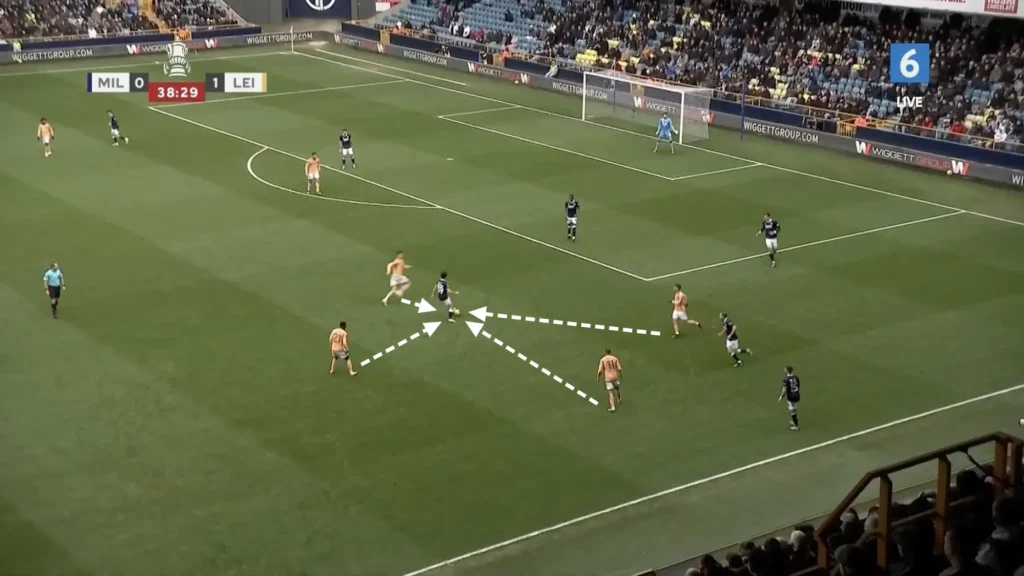
Final Thoughts
In conclusion, this tactical analysis of Enzo Maresca and his approach with Leicester City provides insights into the strategic nuances that define his coaching style. Maresca’s influence on the team’s tactics is evident in the dynamic formations, versatile build-up strategies, and defensive solidity observed on the field. The emphasis on fluid transitions, effective pressing, and creating numerical advantages showcases Maresca’s commitment to a proactive and adaptive football philosophy. As Leicester City continues to evolve under his guidance, the tactical intricacies explored in this analysis shed light on the potential pathways to success that Maresca is paving for the club. This journey into Maresca’s tactical blueprint serves not only as a study of Leicester City’s current dynamics but also as a testament to the tactical understanding of a promising coach in the world of football.
